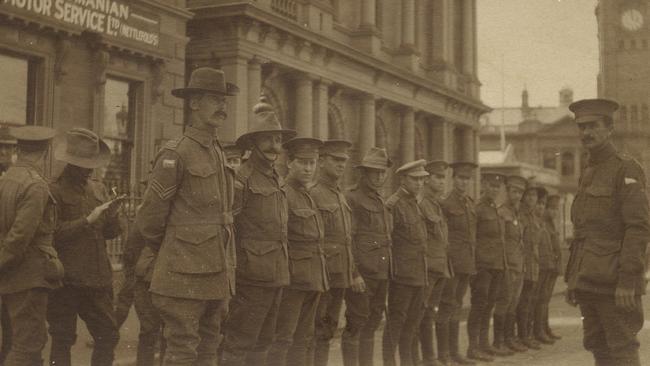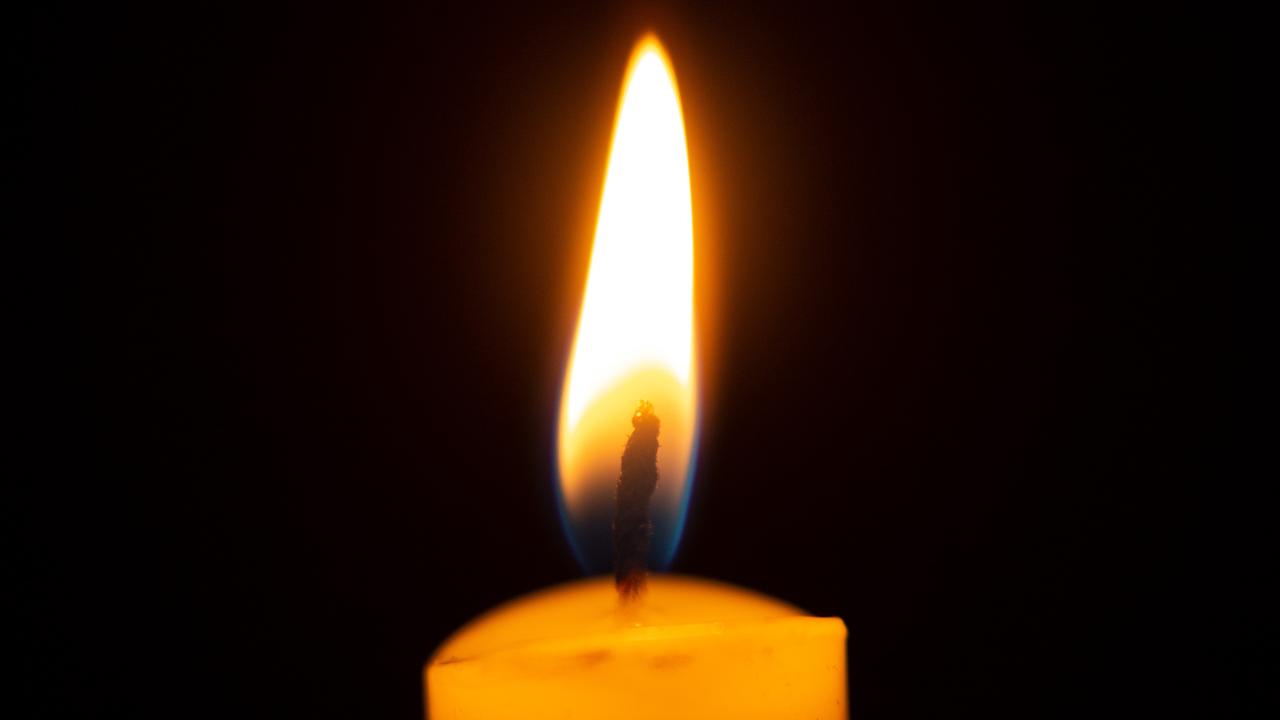Centenary of the Anzacs: Survivors and the scars of battle
EVEN for those who returned, war took its toll. ANNE MATHER reports on the survivors of battle.

ANZAC Centenary
Don't miss out on the headlines from ANZAC Centenary. Followed categories will be added to My News.
FOR those fortunate enough to survive World War I, many returned home broken and damaged.
While many physical scars were obvious, such as missing limbs and faces disfigured by shrapnel, there was also the trauma that lurked beneath.
Historians suggest no soldiers could have escaped World War I completely unharmed, even if they returned physically uninjured.
“The human cost of war is incredible,” said historian Reg Watson.
“One can only imagine how many returned wounded – physically, emotionally and psychologically.”
Tasmania sent more than 15,000 to war, almost 3000 of whom would never return.
Of the many thousands who returned, there is no way of counting their continuing private horrors.
“The men would have nightmares, there was a lot of alcoholism and a lot of domestic violence as a result of what they’d been through,” Mr Watson said.
Many Tasmanian soldiers who suffered shell-shock were sent to the asylum at New Norfolk to recover.
The needs of shell-shock victims was so great a complementary institution was developed for war survivors at nearby Millbrook Estate.
Mr Watson said there were many stories about the former soldiers at New Norfolk living with constant nightmares of battles they were involved in.
He said men would march around the asylum with imaginary weapons, some throwing imaginary grenades.
“Their nerves were completely gone,” he said.
Launceston-born historian Kirsty Harris, now at the University of Melbourne, has written extensively of how nurses dealt with the casualties of war.
Dr Harris says shell-shock was a new psychiatric condition resulting from “strain, exhaustion, horrifying unnatural conditions and the general turmoil of war – including seeing friends killed and mutilated bodies”.
Writing in a paper called In the Grey Battalion, Dr Harris says “the noise of the frontline often shattered men’s nerves, and even deafened or maddened them”.
“Stammering, loss of memory, headaches, insomnia, nightmares, hallucinations, deafness and temporary blindness afflicted those with shell-shock,” she writes.
The physical damage sustained was also unprecedented, with advances in warfare generating wounds not seen previously.
Dr Harris says most wounds were caused by bullets, shrapnel, explosive shells, trench mortars and hand grenades.
Permanent facial injuries were a consequence of trench warfare, as men’s heads were exposed when they looked up for the enemy, from shelter.
Mr Watson said the number of such injuries saw great advances in facial surgery, and the loss of arms and legs also saw advances in prosthetic limbs.
Chemical warfare, not seen previously, also appeared on the battlefield in WWI – resulting in damaged eyes, noses and lungs.
Many hospitals were set up in Tasmania for the wounded soldiers on their return.
One such hospital was Roseneath, at Austins Ferry. Red Cross set up the convalescent hospital for wounded soldiers.
The hospital opened in August 1915, looking after hundreds of soldiers until its closure in March 1919. It was destroyed in the 1967 bushfires.
Despite the physical, psychological and emotional suffering, there were many returned soldiers who went on to lead full and active lives.
Some even were fit enough to serve in World War II, such as Rupert Reid Agnew.
Mr Agnew, from Oatlands district, served as a light horseman in WWI – receiving a medal for “distinguished gallantry and bravery”.
After returning and taking up his role as a grazier, he enlisted in World War II in 1942.
Another returned WWI soldier, Victoria Cross recipient John James Dwyer, originally from Bruny Island, was elected to the Tasmanian House of Assembly in May 1931.
The Labor politician served as deputy premier of Tasmania from August 1958 to May 1959.
Originally published as Centenary of the Anzacs: Survivors and the scars of battle


